Indoor plants are the décor item du jour but it isn’t just indoor foliage plants that are having a moment.
Indoor flowering plants are gaining in popularity and will make your own home a riot of colour almost all year round. Though they require more work to thrive indoors, you will never need to buy a bunch of flowers again when they do.
Pros and cons of indoor flowering plants
In reality, there aren’t many varieties of plants that are genuinely indoor flowering plants. It’s more likely that a variety is capable of adapting to indoor conditions given the right care, that the plant will produce a blooming flower.
“Choosing the right species of indoor flowers is crucial as healthy flowering indoor plants are beholden to completely different conditions than when grown outdoors,” says
“The beautiful flowering plants you see outside in gardens more often than not cannot be replicated inside your home. Stick to indoor flower species that are tried and tested in indoor environments.”
Another common issue is that indoor flowering plants often do not re-bloom. This is usually due to one of two factors: not enough light or inadequate humidity.
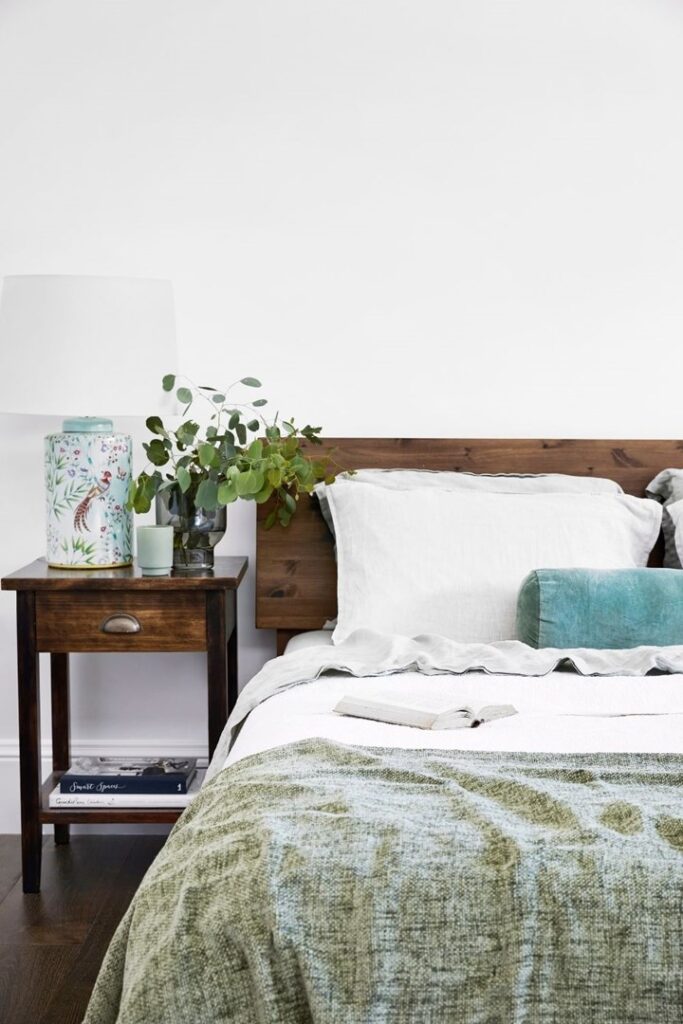
Outdoor flowering plants
There are some outdoor flowering plants that can flower when indoors, but only for a few weeks displays. In summer, hydrangeas and begonias make for good indoor flowering plants, while in winter, the hellebore (or winter rose) will look great indoors. When they stop blooming place them back outside or plant into the garden.
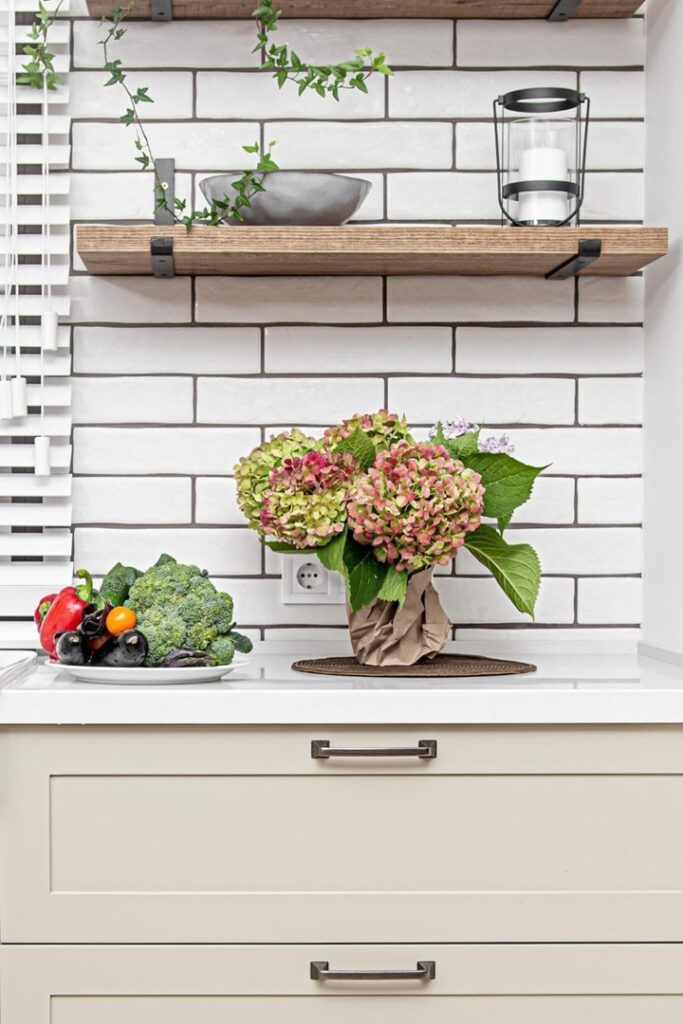
How to keep your indoor flowering plants alive
Seasoned landscaper Tom Smith has some excellent suggestions for keeping indoor flowers alive and healthy, such as choosing positions that are close to windows with indirect sunlight, so your houseplant is in a bright environment. Direct sunshine on your flowering plants is usually too harsh and can lead to leaf or flower burn.
Another suggestion from Tom is to avoid putting indoor flowering plants in high traffic areas and dark corners.
“Plant care is essential for longevity,” says Tom. “Taking your plants outside and giving them a good soak, exposing them to the elements once a fortnight will keep them lush and healthy.”
Consider placing them in the most humid room in the house – the bathroom! Just pop them in for a few days during the week.
Be sure to water plants regularly, only when the top three to four centimetres of soil is dry to the touch. Make sure the soil doesn’t stay saturated though.
Also, remember to feed indoor flowering plants with a flower-promoting fertiliser formulation.
Indoor flowering plants
1. Bromeliad
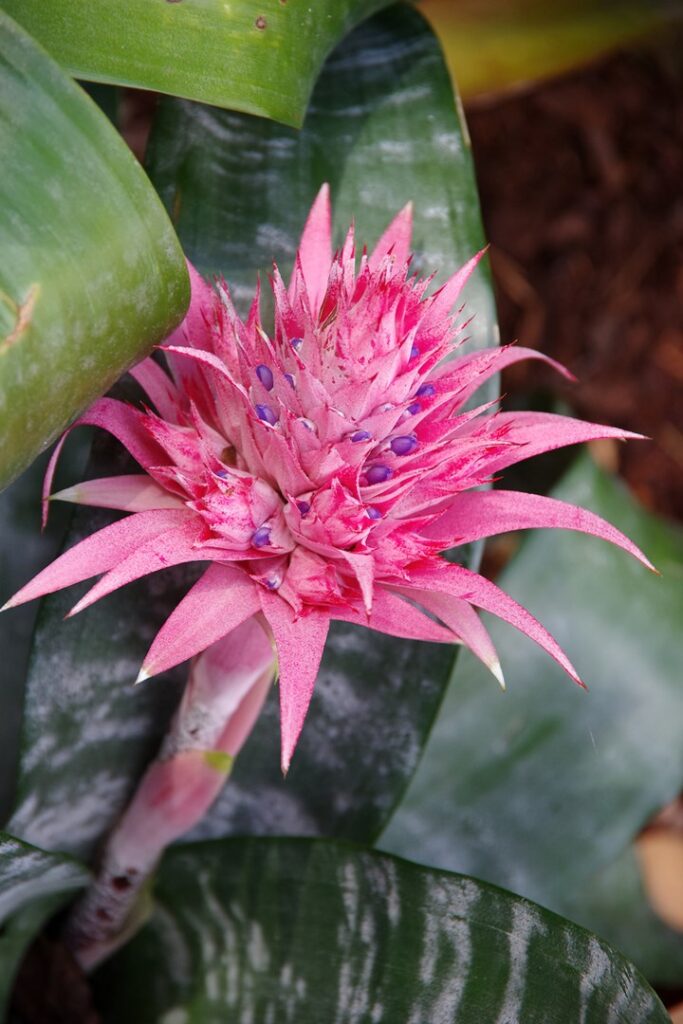
A relative of the pineapple, these tropical indoor flowering plants feature striking blossoms that bring a serious pop of colour to your indoor garden.
“Although tolerant of low light, bromeliads need a relatively bright spot to encourage blooms,” says Lauren Camilleri, co-founder of Sydney plant delivery service, Leaf Supply. “They flower infrequently but it’s worth the wait and the ornamental foliage is beautiful in its own right. Maintain humidity by sitting them on a saucer filled with pebbles and water. The plant produces offsets known as pups that can be propagated to grow your collection on the cheap.”
Cut off the pup with a sharp, sterilised knife or scissors when it’s about a third of the size of the ‘mother’, as close to the mother as possible without injuring it. Replace the medium around the mother and dip the ends of the pup into a fungicide and rooting hormone before popping it into a new pot. Prop it up with sticks or small stakes and put in bright, indirect light, with the medium moist but not wet. They take two to three years to mature.
Bromeliads don’t require a lot of watering, as they collect and store rainfall in the central cups of their leaf rosettes. During dry periods, fill that cup with water. But this well attracts mosquitoes, which lay their eggs in the still water. Spray the water with a tiny amount of environmentally safe and diluted detergent or put in a drop of organic cooking oil. This lowers the surface tension of the water and makes it hard for the mozzies to land and lay their eggs.
2. Lipstick plant
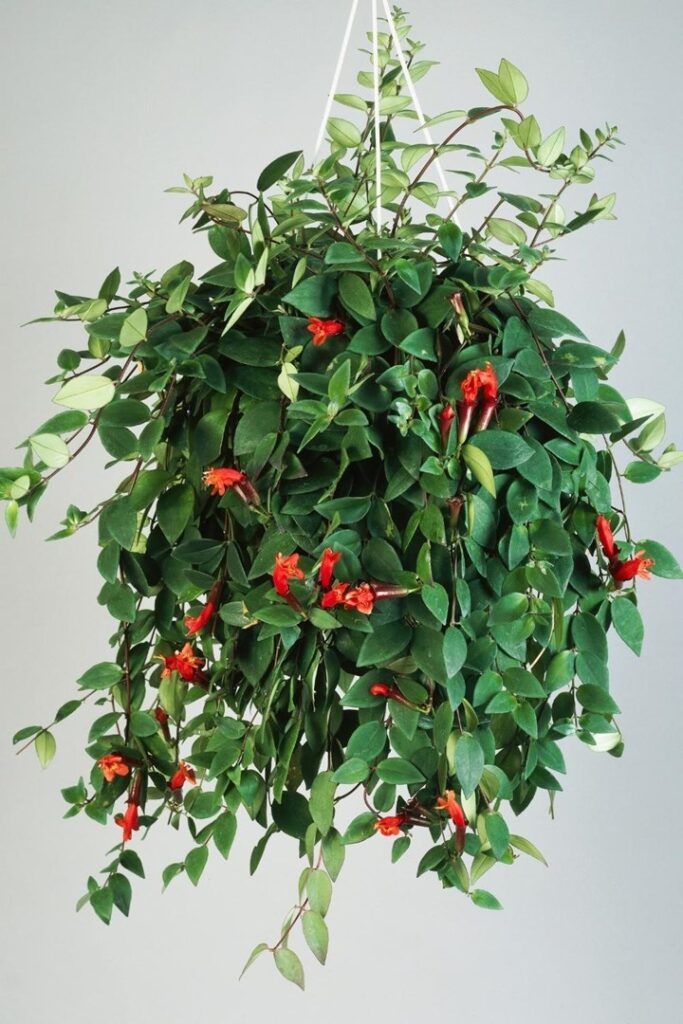
Take your bathroom or kitchen to the tropics with this compact trailing plant that’s perfect in pots, hanging pots or macrame pot holders.
The Aeschynanthus pulcher, or lipstick plant, is another beautiful foliage plant with lovely blooms to boot. “The Aeschynanthus is a fantastic trailing plant that with enough bright, indirect light will produce incredible red flowers that resemble a tube of lipstick,” says Lauren of Leaf Supply.
“Water once the top 2cm or so of soil is dry and ensure they’re sitting somewhere with plenty of natural light.”
3. Flamingo lily
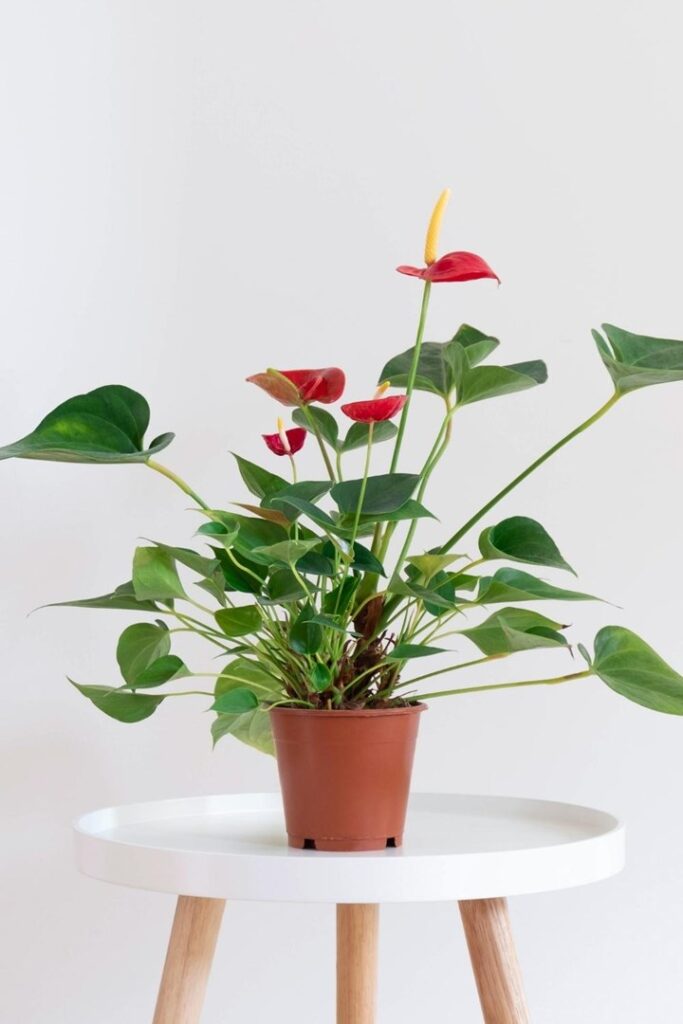
Thanks to the striking flowers and glossy leaves, the flamingo lily is the perfect plant to add some much needed colour to your space. An added bonus is that they flower 300 out of 365 days of the calendar year.
Known as the flamingo lily or flamingo flower, the anthurium ambianum is a low maintenance perennial recommended by Tom. It requires light, as more sun light equals more flowers.
“Anthurium is susceptible to root rot so don’t over water and ensure soil is well draining,” says Lauren of Leaf Supply. “To promote the best blooms, use a fertiliser that has a higher phosphorus number. A feed every few months should do the trick.”
The flamingo lily is particularly comfortable in more humid conditions, so they’re the perfect pick for your bathroom and kitchen.
4. Hoya obovate
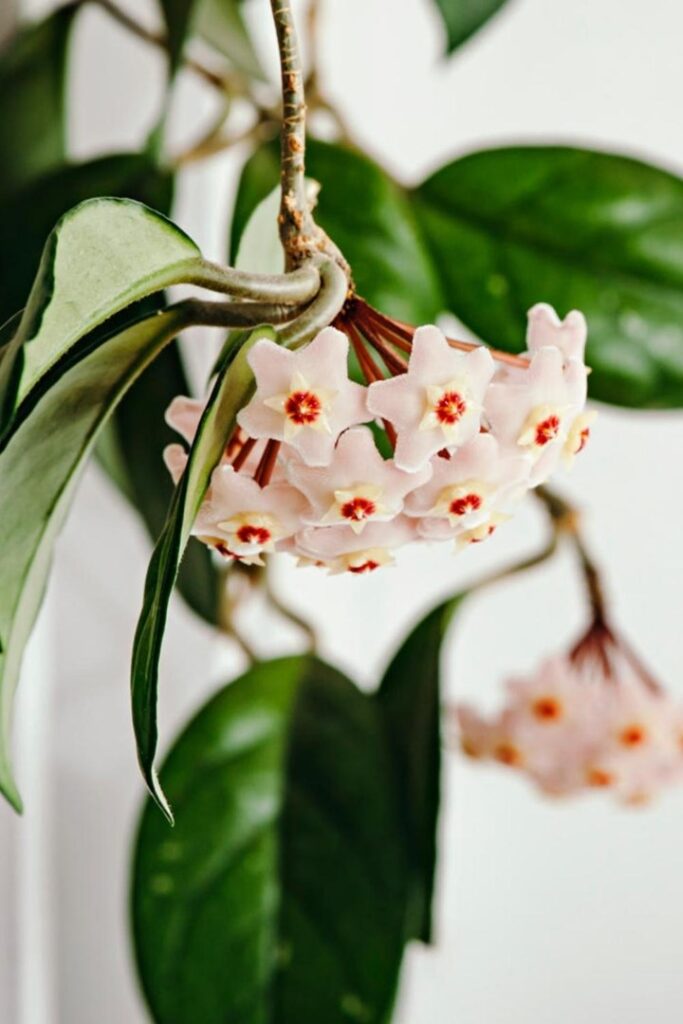
Hoyas grow best in warm climates. In cooler areas, consider growing them in pots and positioning them in a warm protected spot, such as an indoor sunroom or greenhouse. Hoyas won’t flower unless they receive sufficient sunlight.
“When foliage is just as important as flowers, hoyas reign supreme,” says Lauren Camilleri, co-founder of Sydney plant delivery service, Leaf Supply.
“Blessed with thick, juicy leaves these beauties will bring the lushness without the effort. Also referred to as the wax plant due to its waxy foliage and stems, this semi-succulent is wonderfully easy to care for. Allow the soil to dry out between watering. She’ll even reward a bit of neglect with some banging blooms, pretty balls of teeny tiny five-pointed stars that smell as sweet as they look.”
Their diverse trailing or climbing forms make them ideal candidates for pots and hanging baskets – perfect for growing on balconies or even indoors in cool climates. A good indicator of whether you need to water is to check the soil. Simply insert your index finger to the first knuckle – if it’s near dry, give it a good drink, but if it’s moist, leave watering for a couple of days.
5. Kalanchoe blossfeldiana
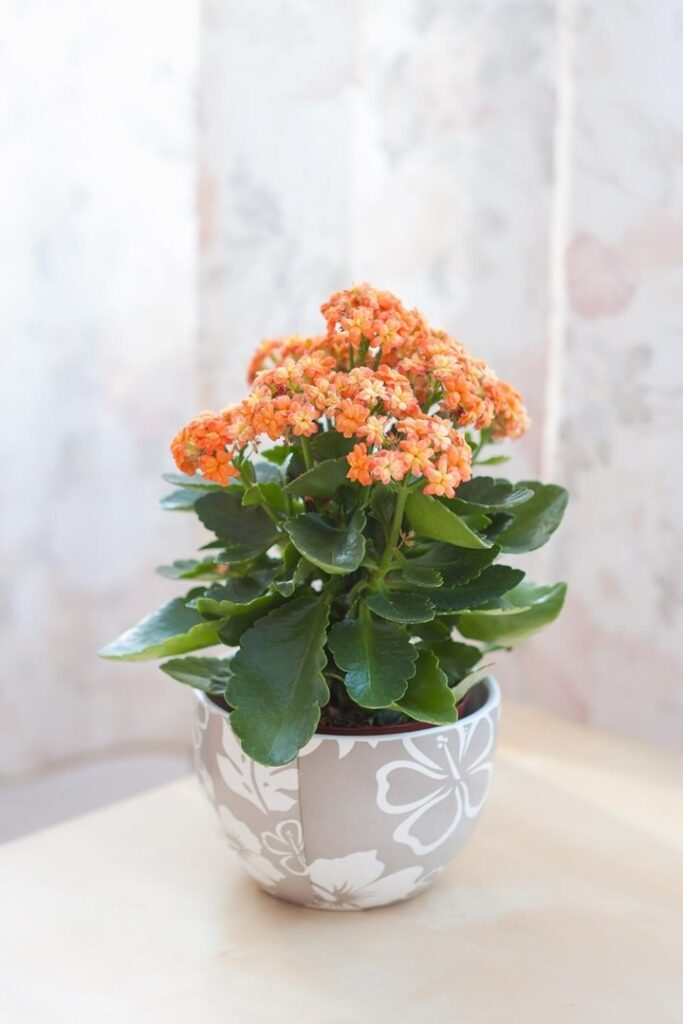
The tiny yet vibrant kalanchoe flowers are ideal to spruce up any kitchen or bathroom in a flash. This bold succulent flowers profusely in winter and its blooms last for many weeks. And how’s this for a bonus? Kalanchoes are technically perennials, so you’ll get more than a year out of them.
The kalanchoe blossfeldiana is a long-flowering perennial succulent that requires warm temperatures. “Once flower heads wither, cut them back,” says Tom.
“This will encourage additional flowers to blossom.”
To grow, kalanchoes likes full sun or part shade. Keep moist in warmer weather, and water less frequently in winter. Feed with a slow release fertiliser and remove deadhead spent flowers.
6. Orchid
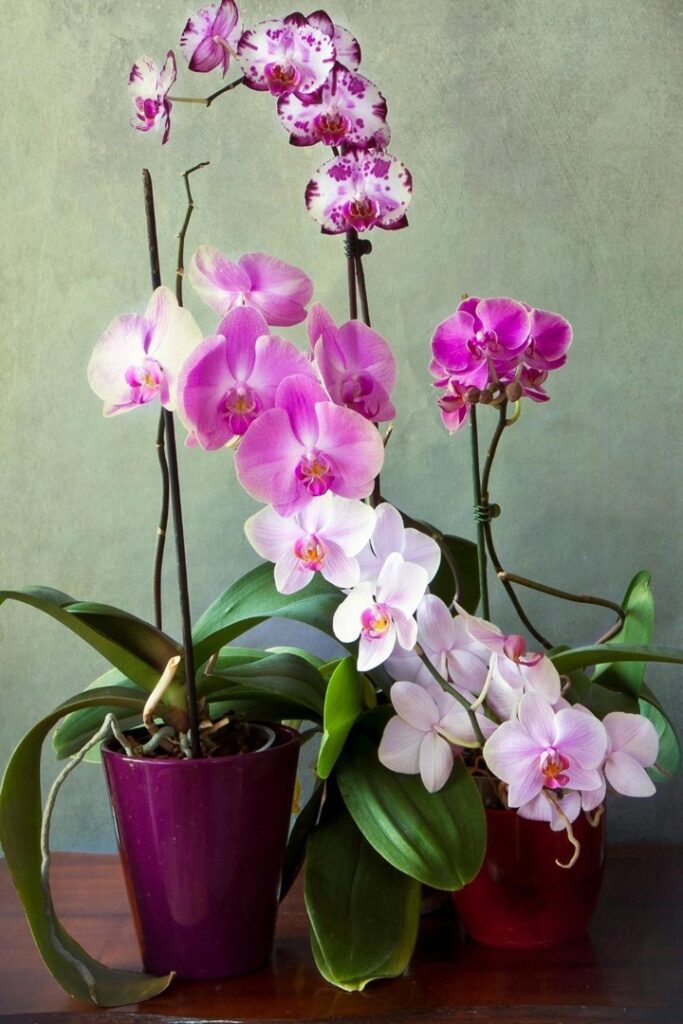
The moth orchid (Phalaenopsis sp.) is often bought as a long-lasting alternative to cut flowers but, because of its reputation for being finicky and difficult to grow, it’s often thrown out once the blooms have faded. However, you’ll be surprised to know they’re actually one of the easiest orchids to grow indoors.
“They require only low to medium light and it’s not uncommon to see them thriving on a desk under nothing more than a fluorescent light,” says Lauren. “Their long-lasting blooms come in a wide variety of colours including white, pink, orange and purple and they grow best in a very well-draining medium to avoid root rot. To stimulate growth once the blooms have dropped off snip the stem just above the second node and wait a few weeks in the hope of a second round of fabulous flowers.”
Moth orchids have no water storage organs other than their leaves, so you shouldn’t let them dry out completely. Thoroughly water potting mix, but do let water sit in the crown of the plant as this can lead to fungal problems. Let the water drain before returning to its position and don’t sit the plant in a saucer. In most cases, watering once every seven days is enough.
If using liquid fertilisers, monthly applications are usually recommended. Also, when it comes to repotting, they will happily remain in their pot for up to three to four years.
7. Peace Lily
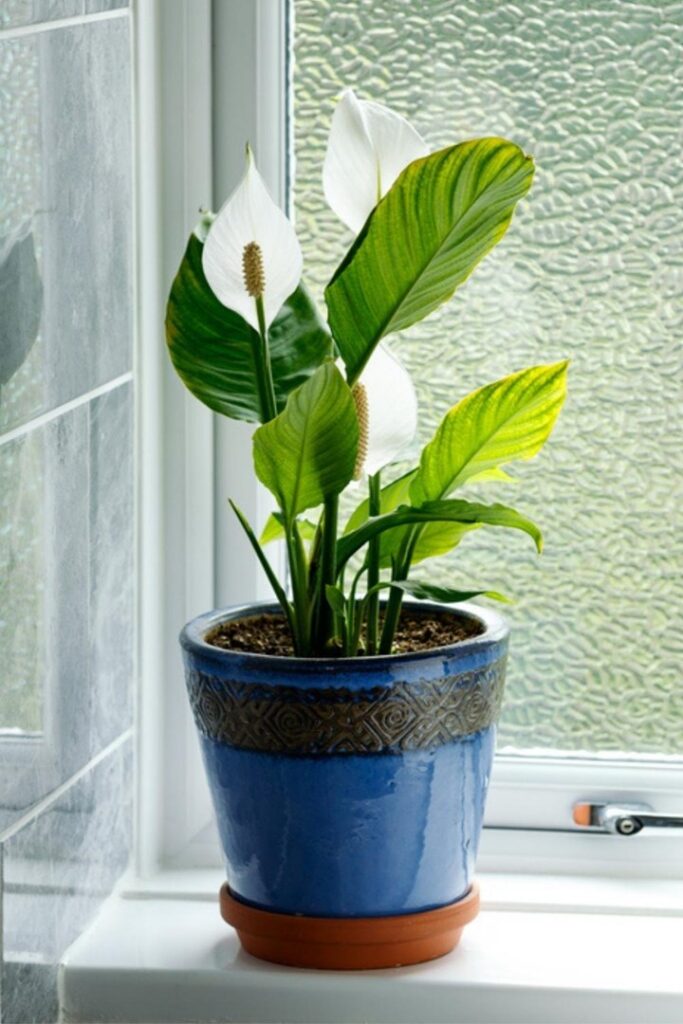
Looking for an easy and undemanding indoor flower to look after? With their glossy green leaves, peace lilies make the perfect addition to any home.
The peace lily, or Spathiphyllum is recommend by Tom and is a hardy, robust indoor plant that likes a bright room but can adapt to t’s surroundings. Only water when the foliage begins to wilt.
This is one of the best indoor flowering plants for low light, which it adapts to. Not only do they produce a beautiful white flower but peace lilies help remove toxins like benzene, carbon monoxide, formaldehyde, trichloroethylene, xylene from the air.
For best results use a slow-release fertiliser in spring to promote growth and those glorious white flowers.
8. African violet
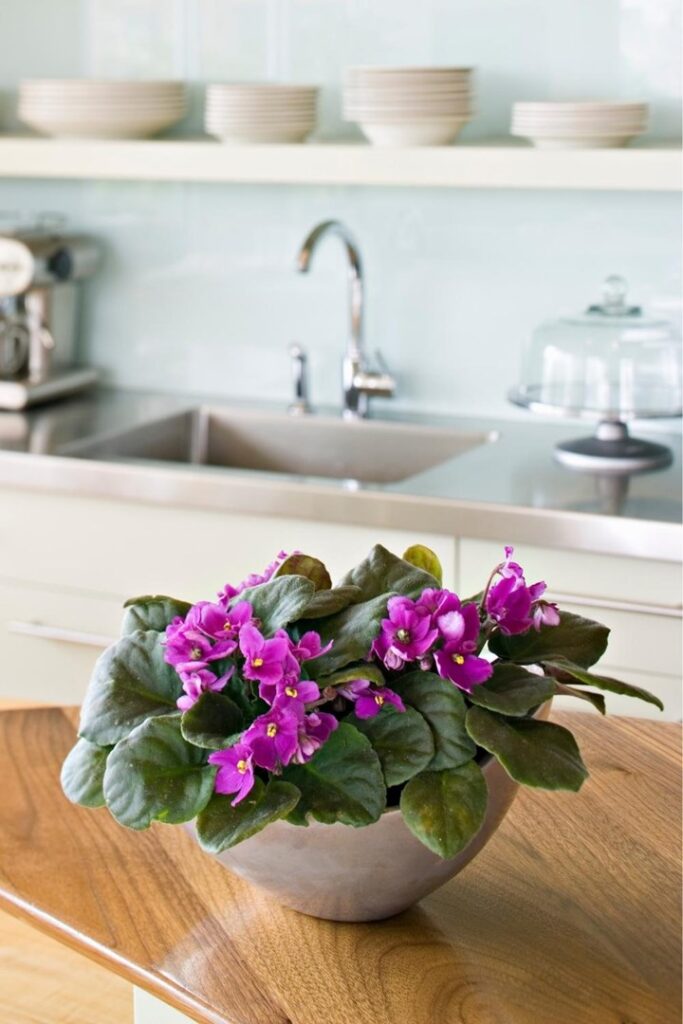
African violets are plush and lush, with velvety leaves and jewel-like blooms that add a touch of elegance to any room in your home. While the abundance of huge leaves will soften any hard edges, the colours of the flowers range from wondrous to wow! Position one on a corner table now and soon you won’t be able to resist building a collection.
Plastic pots are preferable to terracotta pots because plastic doesn’t absorb moisture as clay does. And, because African violet roots grow out rather than down – and actually enjoy being pot-bound – go for a squat pot.
The growing medium should be as light as possible as African violets have delicate roots and a heavy mix can crush them. The mix needs to be free-draining so water doesn’t linger – they’re also susceptible to root rot and crown rot.
African violets are thirsty plants but not great swimmers, so don’t drown them. Water them in a sink when the mix is dry when you touch it and allow the water to run through the pot’s drainage hole. The water should be room temperature. Be sure to only water the potting mix, not the leaves, or your plants may develop fungal problems.
Disclaimer: The opinions posted within this blog are those of the writer and do not necessarily reflect the views of Better Homes and Gardens® Real Estate, others employed by Better Homes and Gardens® Real Estate or the organisations with which the network is affiliated. The author takes full responsibility for his opinions and does not hold Better Homes and Gardens® Real Estate or any third party responsible for anything in the posted content. The author freely admits that his views may not be the same as those of his colleagues, or third parties associated with the Better Homes and Gardens® Real Estate network.



